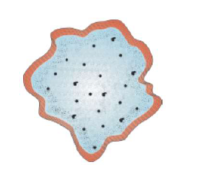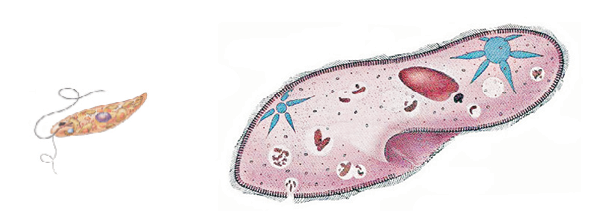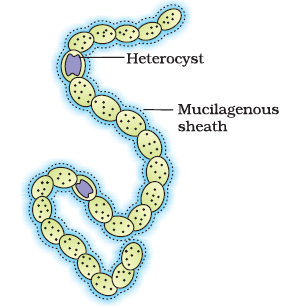Biological Classification TS
Quiz Summary
0 of 69 Questions completed
Questions:
Information
You have already completed the quiz before. Hence you can not start it again.
Quiz is loading…
You must sign in or sign up to start the quiz.
You must first complete the following:
Results
Results
0 of 69 Questions answered correctly
Your time:
Time has elapsed
You have reached 0 of 0 point(s), (0)
Earned Point(s): 0 of 0, (0)
0 Essay(s) Pending (Possible Point(s): 0)
Categories
- Not categorized 0%
- 1
- 2
- 3
- 4
- 5
- 6
- 7
- 8
- 9
- 10
- 11
- 12
- 13
- 14
- 15
- 16
- 17
- 18
- 19
- 20
- 21
- 22
- 23
- 24
- 25
- 26
- 27
- 28
- 29
- 30
- 31
- 32
- 33
- 34
- 35
- 36
- 37
- 38
- 39
- 40
- 41
- 42
- 43
- 44
- 45
- 46
- 47
- 48
- 49
- 50
- 51
- 52
- 53
- 54
- 55
- 56
- 57
- 58
- 59
- 60
- 61
- 62
- 63
- 64
- 65
- 66
- 67
- 68
- 69
- Current
- Review
- Answered
- Correct
- Incorrect
-
Question 1 of 69
1. Question
How many matching are correct according cell wall:
(a) Monera – Present
(b) Protista – Present in all member
(c) Fungi – Present with chitin
(d) Animalia – AbsentCorrectIncorrectHint
(b) [NCERT-I-11]
-Monera – Present
Protista – Present in some member
Fungi – Present with chitin
Animalia – Absent -
Question 2 of 69
2. Question
On the basis of nuclear membrane which of the following matching is incorrect:
CorrectIncorrectHint
(b) [NCERT-I-11]
Monera – Absent
Protista – Present
Fungi – Present
Animalia – Present -
Question 3 of 69
3. Question
Which of the following statements is correct?
CorrectIncorrectHint
(a) [NCERT-I-21]
Lichens do not grow in polluted areas -
Question 4 of 69
4. Question
Which of the following statements is incorrect:
CorrectIncorrectHint
(b) [NCERT-I-20]
Infective constituent in viruses is the nucleic acid -
Question 5 of 69
5. Question
Find correct option regarding this diagram:

(a) Colour of this organism appear as yellow, brown blue and red but not green.
(b) Releases toxins that kills fishes and other marine animal
(c) Spores posses true wall
(d) It is autotrophic protistCorrectIncorrectHint
(b) [NCERT-I-15]
Spores posses true wall -
Question 6 of 69
6. Question
Given below are two statements :
Statement I :
The boundaries of the kingdom protista are not well defined
Statement II :
Most protozoans are saprophytic and absorb organic matter from dead substance.
In the light of the above statements, choose the correct answer from the options given belowCorrectIncorrectHint
(b) [NCERT-I-14,16]
The boundaries of the kingdom protista are not well defined
Most fungi are saprophytic and absorb organic matter from dead substance. -
Question 7 of 69
7. Question
Given below are two statements one is labelled as Assertion (A) and the other is labelled as Reason (R)
Assertion (A)
Kingdom Protista forms a link with the other kingdoms.
Reason ( R )
It is believed that Protista evolved from the kingdom Monera and is the ancestor of multicellular eukaryotes.
In the light of the above statements, choose the correct answer from the options given below :CorrectIncorrectHint
(d) [NCERT-I-16]
Both (A) and (R) are correct and (R) is the correct explanation of (A) -
Question 8 of 69
8. Question
Number of statement which are correct for given both organism:

(a) Both belongs to kingdom protista
(b) Both belongs to kingdom monera
(c) Both are unicellular organism
(d) Both have motile structure cilliaCorrectIncorrectHint
(b) [NCERT-I-12]
Both belongs to kingdom protista
Both are unicellular organism -
Question 9 of 69
9. Question
Which of the followings are a type of Archaebacteria :
CorrectIncorrectHint
(d) [NCERT-I-19]
These bacteria are special since they live in some of the most harsh habitats such as extreme salty areas (halophiles), hot springs (thermoacidophiles) and marshy areas (methanogens). -
Question 10 of 69
10. Question
The two kingdom classification was given by :
CorrectIncorrectHint
(a) [NCERT-I-16]
In Linnaeus’ time a Two Kingdom system of classification with Plantae and Animalia kingdoms was developed that included all plants and animals respectively. -
Question 11 of 69
11. Question
In five kingdom classification system. The five kingdom are :
CorrectIncorrectHint
(a) [NCERT-I-17]
R.H. Whittaker (1969) proposed a Five Kingdom Classification. The kingdoms defined by him were named Monera, Protista, Fungi, Plantae and Animalia. -
Question 12 of 69
12. Question
The main criteria for five Kingdom of classification Includes:
CorrectIncorrectHint
(d) [NCERT-I-11]
The main criteria for five Kingdom classification used by him include cell structure, body organisation, mode of nutrition, reproduction and phylogenetic relationships. -
Question 13 of 69
13. Question
Bacteria which play a great role in recycling nutrient like nitrogen, phosphorous, iron and sulphur are:
CorrectIncorrectHint
(c) [NCERT-XI-13]
Chemosynthetic autotrophic bacteria oxidise various inorganic substances such as nitrates, nitrites and ammonia and use the released energy for their ATP production. They play a great role in recycling nutrients like nitrogen, phosphorous, iron and sulphur. -
Question 14 of 69
14. Question
Which of the following is incorrect about chrysophytes:
CorrectIncorrectHint
(d) [NCERT-I-15]
This group includes diatoms and golden algae (desmids). They are found in fresh water as well as in marine environments. They are microscopic and float passively in water currents (plankton). Most of them autotrophic -
Question 15 of 69
15. Question
Euglenoids have protein rich layer instead of cell wall this layer is called:
CorrectIncorrectHint
(a) [NCERT-I-15]
Instead of a cell wall, Euglenoids have a protein rich layer called pellicle which makes their body flexible. -
Question 16 of 69
16. Question
Which of the following is correct about slime moulds:
CorrectIncorrectHint
(c) [NCERT-I-15]
The spores are dispersed by air currents. -
Question 17 of 69
17. Question
Which of the following is/are correct:
A. Bacteria are most abundant microorganism
B. Bacteria are individually show most extensive metabolic diversity
C. Bacteria are very simple in structure but complex in behaviour
D. Bacteria may be photosynthetic autotrophic or chemosynthetic autotrophicCorrectIncorrectHint
(b)
[NCERT-I-13]
Bacteria are the most abundant microorganisms. Though the bacterial structure is very simple, they are very complex in behaviour. Compared to many other organisms, bacteria as a group show the most extensive metabolic diversity. Some of the bacteria are autotrophic, i.e., they synthesise their own food from inorganic substrates. They may be photosynthetic autotrophic or chemosynthetic autotrophic. -
Question 18 of 69
18. Question
Earlier classification systems included bacteria, blue green algae, fungi, mosses, ferns, gymnosperm and the angiosperms under plants. Which character are taken for this classification:
CorrectIncorrectHint
(b)
[NCERT-I-11]
Earlier classification systems included bacteria, blue green algae, fungi, mosses, ferns, gymnosperms and the angiosperms under ‘Plants’. The character that unified this whole kingdom was that all the organisms included had a cell wall in their cells. -
Question 19 of 69
19. Question
In five kingdom classification system which kingdom are unicellular eukaryotes :
CorrectIncorrectHint
(a) [NCERT-I-11]

-
Question 20 of 69
20. Question
In which kingdom autotrophic mode of nutrition are never occur :
CorrectIncorrectHint
(c) [NCERT-I-16]

-
Question 21 of 69
21. Question
How many matching are correct :
CorrectIncorrectHint
(a) [NCERT-I-12]
Bacteria are grouped under four categories based on their shape: the spherical Coccus (pl.: cocci), the rod-shaped Bacillus (pl.: bacilli), the commashaped Vibrium (pl.: vibrio) and the spiral Spirillum (pl.: spirilla) -
Question 22 of 69
22. Question
Dikaryon formation is characteristic of:
CorrectIncorrectHint
(b) [NCERT-I-18]
However, in other fungi (ascomycetes and basidiomycetes), an intervening dikaryotic stage ( \(n + n\), i.e., two nuclei per cell) occurs; such a condition is called a dikaryon and the phase is called dikaryophase of fungus. -
Question 23 of 69
23. Question
Match the column I and column II and choose correct answer:
\(
\begin{array}{|c|c|c|c|}
\hline & \text { Column I } & & \text { Column II } \\
\hline \text { A. } & \text { Phycomycetes } & \text { i. } & \text { Agaricus, Ustilago } \\
\hline \text { B. } & { Ascomycetes } & \text { ii. } & \text { Mucor, Rhizopous } \\
\hline \text { c. } & \text { Basidiomycetes } & \text { iii. } & \begin{array}{l}
\text { Alternaria, } \\
\text { Colletotricum }
\end{array} \\
\hline \text { D. } &{ Deuteromycetes } & \text { iv. } & \begin{array}{l}
\text { Penicillium, } \\
\text { Claviceps }
\end{array} \\
\hline
\end{array}
\)CorrectIncorrectHint
(a) [NCERT-I-18]
Phycomycetes – Mucor, Rhizopous
Ascomycetes – Penicillium, Claviceps
Basidiomycetes – Agaricus, Ustilago
Deuteromycetes – Alternaria, Colletotricum -
Question 24 of 69
24. Question
Asexual spore are produced exogenously in A and endogenously in B:
CorrectIncorrectHint
(a) [NCERT-I-18]
Asexual spore are produced exogenously in Ascomycetes and endogenously in Phycomycetes -
Question 25 of 69
25. Question
Many drawbacks was in two kingdom classifications system, because this system did not distinguish between which :
CorrectIncorrectHint
(d) [NCERT-1-10]
In Linnaeus’ time a Two Kingdom system of classification with Plantae and Animalia kingdoms was developed that included all plants and animals respectively. This system was used till very recently. This system did not distinguish between the eukaryotes and prokaryotes, unicellular and multicellular organisms and photosynthetic (green algae) and non-photosynthetic (fungi) organisms. -
Question 26 of 69
26. Question
In six kingdom classifications which kingdom is divided into two domains :
CorrectIncorrectHint
(b) [NCERT-I-11]
The three-domain system has also been proposed that divides the Kingdom Monera into two domains, leaving the remaining eukaryotic kingdoms in the third domain and thereby a six kingdom classification. You will learn about this system in detail at higher classes -
Question 27 of 69
27. Question
Red tide is caused by
CorrectIncorrectHint
(c)
[NCERT-I-15]
Very often, red dianoflagellates (Example: Gonyaulax) undergo such rapid multiplication that they make the sea appear red (red tides). Toxins released by such large numbers may even kill other marine animals such as fishes. -
Question 28 of 69
28. Question
Bacteriophages (viruses that infect bacteria) are usually :
CorrectIncorrectHint
(d)
[NCERT-I-20]
Bacterial viruses or bacteriphages are usually double stranded viruses -
Question 29 of 69
29. Question
Which is the following is true about basidiomycetes:
(a) Also called sac fungi
(b) Sex organs absent, but plasmogamy is brought about by fusion of two vegetative cells of different genotypes
(c) Karyogamy and meiosis takes place outside the basidium
(d) Basidiospores are produced exogenouslyCorrectIncorrectHint
(b)
[NCERT-I-18]
Commonly known forms of basidiomycetes are mushrooms, bracket fungi or puffballs. They grow in soil, on logs and tree stumps and in living plant bodies as parasites, e.g., rusts and smuts. The mycelium is branched and septate. The asexual spores are generally not found, but vegetative reproduction by fragmentation is common. The sex organs are absent, but plasmogamy is brought about by fusion of two vegetative or somatic cells of different strains or genotypes. The resultant structure is dikaryotic which ultimately gives rise to basidium. Karyogamy and meiosis take place in the basidium producing four basidiospores. The basidiospores are exogenously produced on the basidium (pl.: basidia). The basidia are arranged in fruiting bodies called basidiocarps. Some common members are Agaricus (mushroom), Ustilago (smut) and Puccinia (rust fungus). -
Question 30 of 69
30. Question
Match the different types of spores listed under column-I with the names of the organisms given under column-II
\(
\begin{array}{lll}
\text { Column-I } & & \text { Column-II } \\
\text { Spores } & & \text { Organisms } \\
\text { a. } \text { Ascospores } & \text { f. } \text { Ustilago } \\
\text { b. } \text { Basidiospores } & \text { g. } \text { Aspergillus } \\
\text { c. Zygospores } & \text { h. } \text { Rhizopus } \\
\text { d. } \text { Conidia } & \text { i. } \text { Pencillium }
\end{array}
\)CorrectIncorrectHint
(a)
[NCERT-I-17,18]
Ascospores – Aspergillus
Basidiospores – Ustilago
Zygospores – Rhizopus
Conidia – Penicillium -
Question 31 of 69
31. Question
Fungi reproduce by only asexual and vegitative methods in
CorrectIncorrectHint
(d)
[NCERT-I-18]
Commonly known as imperfect fungi because only the asexual or vegetative phases of these fungi are known. -
Question 32 of 69
32. Question
How many matchings are correct :
a. Extreme salty areas – Methanogens
b. Hot springs – Thermoacidophiles
c. Marshy areas – Halophiles
d. Methanogens – Ruminant animalsCorrectIncorrectHint
(c) [NCERT-I-13]
These bacteria are special since they live in some of the most harsh habitats such as extreme salty areas (halophiles), hot springs (thermoacidophiles) and marshy areas (methanogens).
Methanogens are present in the gut of several ruminant animals such as cows and buffaloes and they are responsible for the production of methane (biogas) from the dung of these animals. -
Question 33 of 69
33. Question
Which of the following statements are incorrect about cyanobacteria:
CorrectIncorrectHint
(c) [NCERT-I-13]
The cyanobacteria (also referred to as blue-green algae) have chlorophyll a similar to green plants and are photosynthetic autotrophs. The cyanobacteria are unicellular, colonial or filamentous, freshwater/marine or terrestrial algae. The colonies are generally surrounded by gelatinous sheath. They often form blooms in polluted water bodies. -
Question 34 of 69
34. Question
The group of organisms which are helpful in making curd from milk, production of antibiotics, fixing nitrogen in legume roots. This group of organisms are :
CorrectIncorrectHint
(A)
[NCert-I-13]
Heterotrophic bacteria are most abundant in nature. The majority are important decomposers. Many of them have a significant impact on human affairs. They are helpful in making curd from milk, production of antibiotics, fixing nitrogen in legume roots, etc. -
Question 35 of 69
35. Question
Which of the following are bacterial disease :
CorrectIncorrectHint
(b) [NCERT-I-14]
Some are pathogens causing damage to human beings, crops, farm animals and pets. Cholera, typhoid, tetanus, citrus canker are well known diseases caused by different bacteria. -
Question 36 of 69
36. Question
Viroids are made up of
CorrectIncorrectHint
(c)
[NCERT-I-21]
The RNA of the viroid was of low molecular weight. -
Question 37 of 69
37. Question
Fungal cell wall is composed of :
CorrectIncorrectHint
(a)
[NCEERT-I-11]
Fungal cell wall is composed of chitin and polysaccharides -
Question 38 of 69
38. Question
Mycorrhiza is :
CorrectIncorrectHint
(a) [NCERT-I-16]
Mycorrhiza is Symbiotic association of a soil fungus and roots of higher plants. -
Question 39 of 69
39. Question
Assertion: Most fungi are saprophytic.
Reason: They absorb organic matter from dead substance.CorrectIncorrectHint
(a) [NCERT-I-22]
Most fungi are saprophytic in their mode of nutrition.
They absorb organic matter from dead substance.
-
Question 40 of 69
40. Question
In class Ascomycetes the mycelium is:
CorrectIncorrectHint
(b)
[NCERT-XI-22,23]
The network of hyphae is known as mycelium. Some hyphae are continuous tubes filled with multinucleated cytoplasm – these are called coenocytic hyphae. The mycelium is aseptate and coenocytic. -
Question 41 of 69
41. Question
Which component of lichen prepared/synthesised food:
CorrectIncorrectHint
(b) [NCERT-XI-27]
The algal component is known as phycobiont and fungal component as mycobiont, which are autotrophic and heterotrophic, respectively. Algae prepare food for fungi and fungi provide shelter and absorb mineral nutrients and water for its partner. -
Question 42 of 69
42. Question
According to given figure which of the following option is correct :
 CorrectIncorrect
CorrectIncorrectHint
(b) [NCERT-I-12]

-
Question 43 of 69
43. Question
On the basis of body organisation. How many matching is incorrect :
(a) Fungi – Only cellular
(b) Protista – Cellular
(c) Plantae – Only tissue
(d) Monera – TissueCorrectIncorrectHint
(c) [NCERT-I-11]
Fungi – Cellular, tissue
Protista – Cellular
Plantae – tissue, organ
Monera – Cellular -
Question 44 of 69
44. Question
According to five kingdom classification. Which of the matching is correct:
CorrectIncorrectHint
(c) [NCERT-1-11,12]
Chlorella – Unicellular protist with cell wall
Paramoecium – Unicellular protist without cell wall
Chlamydomonas – Unicellular protist with cell wall -
Question 45 of 69
45. Question
Select the wrong statements :
CorrectIncorrectHint
(c) [NCERT-I-15 to 18]
Pseudopodia are locomotory structures in sporozoans. -
Question 46 of 69
46. Question
Select the wrong statements :
CorrectIncorrectHint
(c) [NCERT-I-14]
The walls of diatoms are not easily destructible -
Question 47 of 69
47. Question
Which one of the following is not a criterion for clarification of fungi?
CorrectIncorrectHint
(d) [NCERT-I-17]
Criterion for clarification of fungi – Morphology of mycelium
-Mode of spore formation
-Fruiting body -
Question 48 of 69
48. Question
Which of the following statements is correct?
CorrectIncorrectHint
(c) [NCERT-1-13,17,18]
Fusion of protoplasms between two motile or nonmotile gametes is called plasmogamy -
Question 49 of 69
49. Question
Which kingdom forms a link with the others dealing with plants, animals and fungi :
CorrectIncorrectHint
(c) [NCERT-I-14]
This kingdom forms a link with the others dealing with plants, animals and fungi. Being eukaryotes, the protistan cell body contains a well defined nucleus and other membrane-bound organelles. -
Question 50 of 69
50. Question
In which organisms the cell walls form two thin overlapping shells, which fit together as in a soap box:
CorrectIncorrectHint
(c) [NCERT-I-14]
Most of them are photosynthetic. In diatoms the cell walls form two thin overlapping shells, which fit together as in a soap box. -
Question 51 of 69
51. Question
How many statements are correct with reference to sporozoans
(a) All are parasite
(b) Locomotory structure present
(c) Malaria causing agent belongs to sporozoans
(d) Nuclear membrane are presentCorrectIncorrectHint
(c) [NCERT-I-16]
Sporozoans are all parasite. Locomotory organelle absent. Plasmodium is member of sporozoans, they caused malaria. Sporozoans are eukaryotic so nuclear membrane are present. -
Question 52 of 69
52. Question
Bladderwort and venus fly trap are examples of
CorrectIncorrectHint
(a) [NCERT-I-19]
A few members are partially heterotrophic such as the insectivorous plants or parasites. Bladderwort and Venus fly trap are examples of insectivorous plants. -
Question 53 of 69
53. Question
How many statements are correct according to kingdom Animalia
a. They directly or indirectly depend on plants for food.
b. They digest their food in an internal cavity
c. They store food reserves as glycogen or fat
d. Some of them are capable of locomotion
e. Their mode of nutrition is holozoicCorrectIncorrectHint
(a) [NCERT-I-19]
Kingdom animalia directly or indirectly depend on plants for food. They digest their food in an internal cavity and store food reserves as glycogen or fat. Their mode of nutrition is holozoic – by ingestion of food. They follow a definite growth pattern and grow into adults that have a definite shape and size. Higher forms show elaborate sensory and neuromotor mechanism. Most of them are capable of locomotion. -
Question 54 of 69
54. Question
Viruses could be crystallised and crystals are made up of
CorrectIncorrectHint
(b) [NCERT-I-20]
W.M. Stanley (1935) showed that viruses could be crystallised and crystals consist largely of proteins. -
Question 55 of 69
55. Question
In the given below examples. How many are viral diseases in animals :
Common cold, mumps, typhoid, cholera, influenza, herpes, tetanus, AIDSCorrectIncorrectHint
(b) [NCERT-1-20]
Viruses cause diseases like mumps, small pox, herpes and influenza. AIDS in humans is also caused by a virus.
All of us who have suffered the ill effects of common cold or ‘flu’ know what effects viruses can have on us, even if we do not associate it with our condition. -
Question 56 of 69
56. Question
The viruses contains
CorrectIncorrectHint
(c) [NCERT-I-20]
In addition to proteins, viruses also contain genetic material, that could be either RNA or DNA. No virus contains both RNA and DNA. -
Question 57 of 69
57. Question
Which of the following organism are insectivorous:
CorrectIncorrectHint
(c) [NCERT-XI-23,25]
Albugo (the parasitic fungi on mustard).Bladderwort and Venus fly trap are examples of insectivorous plants and Cuscuta is a parasite. -
Question 58 of 69
58. Question
Which of the following is incorrect about basidiomycetes:
CorrectIncorrectHint
(b) [NCERT-XI-24]
Only karyogamy and meiosis take place in the basidium producing four basidiospores. -
Question 59 of 69
59. Question
Correct sequence of sexual cycle in fungi is:
CorrectIncorrectHint
(b)
[NCERT-XI-23]
The sexual cycle involves the following three steps:
(i) Fusion of protoplasms between two motile or nonmotile gametes called plasmogamy.
(ii) Fusion of two nuclei called karyogamy.
(iii) Meiosis in zygote resulting in haploid spores. -
Question 60 of 69
60. Question
How many of the following statements are correct with reference to given diagram of organism :

a. This organism is prokaryote
b. Nuclear membrane present
c. They are heterotrophic in nature
d. It is comma shapedCorrectIncorrectHint
(b) [NCERT-I-12]

-
Question 61 of 69
61. Question
An infectious agent which are similar in size to the viruses
CorrectIncorrectHint
(c)
[NCERT-I-21]
In modern medicine certain infections neurological diseases were found to be transmitted by an agent consisted of abnormally folded protein. The agent was similar in size to viruses.
These agents were called prions. The most notable diseases caused by prions are bovine spongiform encephalopathy (BSE) commonly called mad cow disease in cattle and its analogous variant Cr Jacob disease (CJD) in humans. -
Question 62 of 69
62. Question
Given below are two statements : one is labelled as Assertion (A) and the other is labelled as Reason (R)
Assertion: Deuteromycetes commonly known as imperfect fungi.
Reason: In deuteromycetes only the Asexual or vegetative phase are known.
In the light of the above statements, choose the correct answer from the options given below :CorrectIncorrectHint
(d) [NCERT-I-18]
-
Question 63 of 69
63. Question
Given below are two statements : one is labelled as Assertion (A) and the other is labelled as Reason (R)
Assertion: Cyanobacteria have chlorophyll ‘ a ‘ similar to green plant and are photosynthetic autotrophs.
Reason: Some Cyanobacteria can fix atmospheric nitrogen in specialised cell called heterocyst.
In the light of the above statements, choose the correct answer from the options given below :CorrectIncorrectHint
(a) [NCERT-I-13]
-
Question 64 of 69
64. Question
Mad cow disease in cattle caused by an agent which has:
CorrectIncorrectHint
(d) [NCERT-I-21]
In modern medicine certain infectious neurological diseases were found to be transmitted by an agent consisting of abnormally folded protein. The agent was similar in size to viruses These agents were called prions. The most notable diseases caused by prions are bovine spongiform encephalopathy (BSE) commonly called mad cow disease in cattle. -
Question 65 of 69
65. Question
Which of the following is a member of ascomycetes
CorrectIncorrectHint
(b) [NCERT-I-18]
Aspergillus, Claviceps, morels and Neurospora all are the members of ascomycetes. -
Question 66 of 69
66. Question
Mycelium of Neurospora are
CorrectIncorrectHint
(a) [NCERT-I-18]
Mycelium is branched and septate. The asexual spores are conidia produced exogenously on the special mycelium called conidiophores. Conidia on germination produce mycelium. -
Question 67 of 69
67. Question
By using which characters the plants classify into Herbs, Shrubs and Trees :
CorrectIncorrectHint
(b) [NCERT-I-10]
Aristotle was the earliest to attempt a more scientific basis for classification. He used simple morphological characters to classify plants into trees, shrubs and herbs. -
Question 68 of 69
68. Question
Which of the following organisms group are not included in the five kingdom system of classification
CorrectIncorrectHint
(c) [NCERT-I-19]
Some acellular organisms like viruses and viroids as well as the lichens are not included in the five kingdom system of classification -
Question 69 of 69
69. Question
Statement-I: Archaebacteria is a type of Bacteriophage
Statement-II: Bacteriophage is member of kingdom moneraCorrectIncorrectHint
(d) [NCERT-I-19]
Bacteriophage is virus